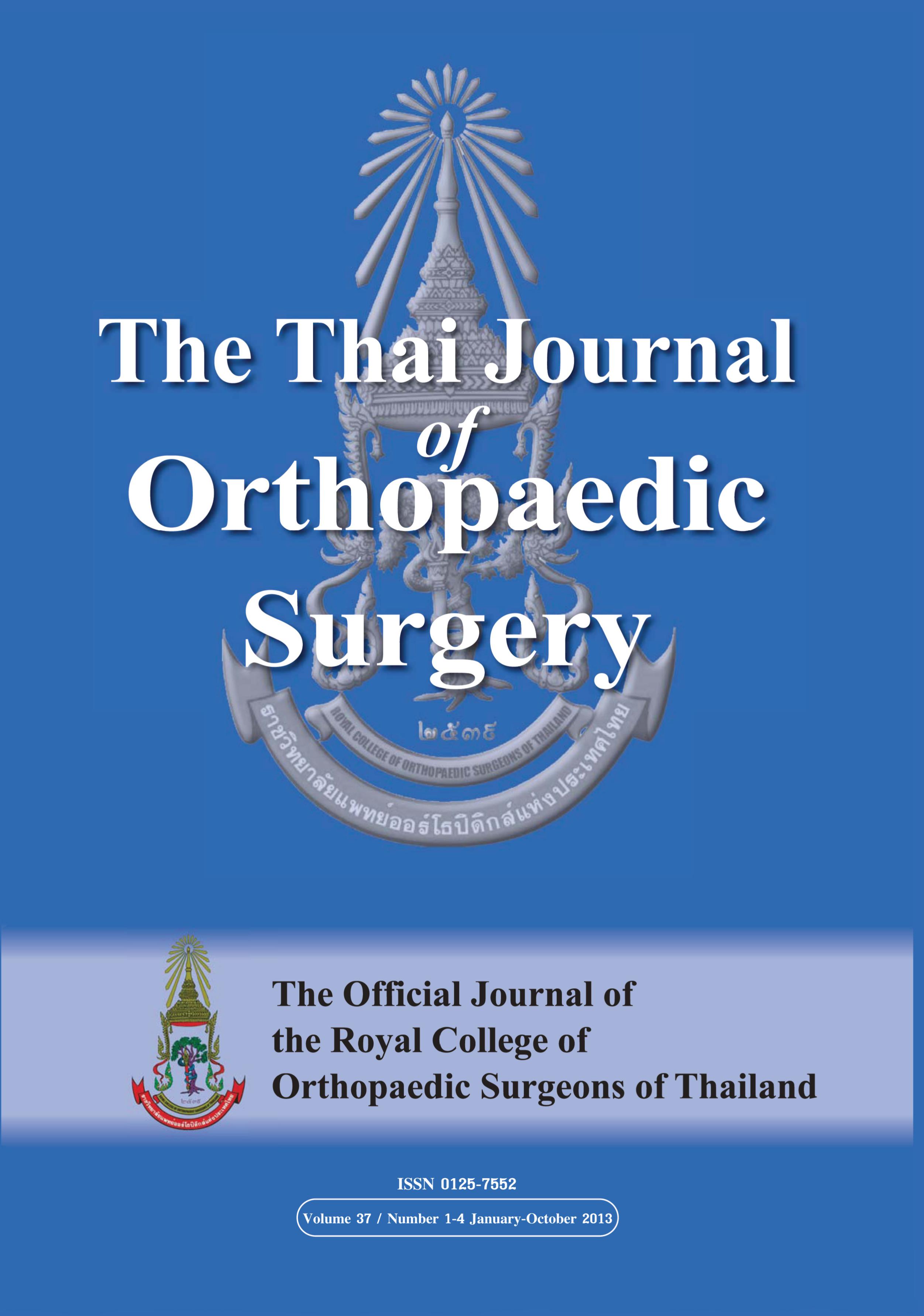Reliability of the VDO Clip-based Goniometry Method for Measuring Range of Motion of the Elbow
Main Article Content
Abstract
Purpose: Telemedicine is an adaptation of internet-based communication for remote patients. The video (VDO) clip-based goniometry method is a type of telemedicine that would be useful for patients who need periodic assessment. A previous report showed the validation of this technique but it did not verify the generalizability or reproducibility of the technique. The purpose of this study was to determine the generalizability and reproducibility of the VDO clip-based goniometry method for measuring the range of motion of the elbow.
Methods: Both elbow flexion and extension, and forearm pronation and supination were measured by the specialist in elbow surgery using standard goniometer. On the same day, VDO records of 30 subjects were performed. One week later, the VDO clips were displayed and their range of motion (ROM) was measured using free download software (PicPick, 3.1.0) by an orthopaedic resident (to determine inter-rater/intra-method reliability). One month later, measurements were taken again by the same specialist (to determine intra-rater/intra-method reliability).
Results: The intraclass correlation coefficient and the Bland-Altman analysis showed the capability of VDO-clip based goniometry and clinical goniometry by the specialist in elbow surgery and orthopaedic resident especially in elbow extension and forearm supination. For elbow flexion and forearm pronation, the data showed that there was some degree of correlation but not as strong as flexion and extension. The results were reproducible by the specialist in elbow surgery even when the measurements were taken again 1 month later.
Conclusion: The VDO clip-based goniometry method for measuring the range of motion of the elbow was reproducible by a specialist in elbow surgery. It was also shown to be possible even if the measurement was obtained by an orthopaedic resident. This offers a great opportunity to follow the outcome assessment of patients for whom transportation to a tertiary care center is a significant barrier.
Article Details
References
2. Shafqat S, Kvedar JC, Guanci MM, Chang Y, Schwamm LH. Role for telemedicine in acute stroke. Feasibility and reliability of remote administration of the NIH stroke scale. Stroke 1999; 30: 2141-5.
3. Engbers L, Bloo H, Kleissen R, Spoelstra J, Vollenbroek-Hutten M. Development of a teleconsultation system for communication between physiotherapists concerning children with complex movement and postural disorders. J Telemed Telecare 2003; 9: 339-43.
4. Mielonen ML, Ohinmaa A, Moring J, Isohanni M. Psychiatric inpatient care planning via telemedicine. J Telemed Telecare 2000; 6: 152-7.
5. Blonna D, Zarkadas PC, Fitzsimmons JS, O'Driscoll SW. Validation of photograph-based goniometric measuring joint range of motion. J Shoulder Elbow Surg 2012; 21: 29-35.
6. Chanlalit C, Kongmalai P. Validation of the Telemedicine-Based goniometry for measuring elbow range of motion. J Med Assoc Thai 2012; 95 Suppl 12: S113-7.
7. Donner A, Elraszrw M. Sample size requirements for reliability studies. Stat Med 1987; 6: 441-8.
8. Bland JM, Altman DG. Measuring agreement in method comparison studies. Stat Methods Med Res 1999; 8: 135-60.
9. Bland JM, Altman DG. Comparing methods of measurement: why plotting difference against 247 standard method is misleading. Lancet 1995; 346: 1085-7.
10. Bland JM, Altman DG. Statistical methods for assessing agreement between two methods of 249 clinical measurement. Lancet 1986; 1: 307-10.
11. Shrout PE, Fleiss JL. Intraclass correlations: uses in assessing rater reliability. Psychol Bull 1979; 86: 420-8.


